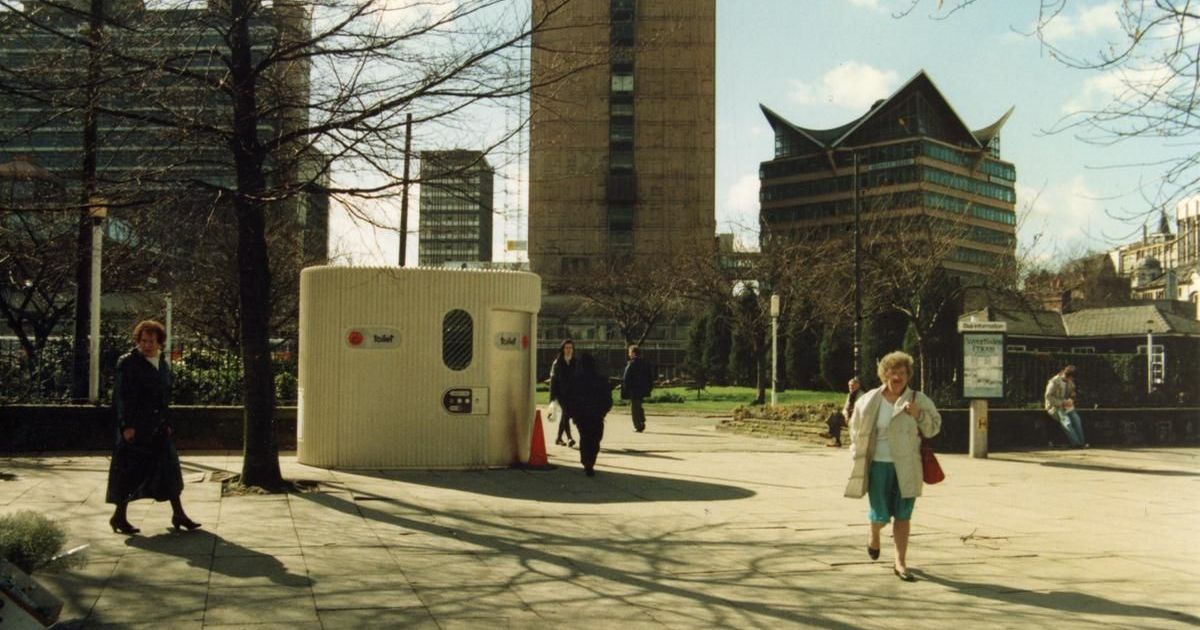Too many of Manchester’s architectural gems are sadly no longer part of the city’s landscape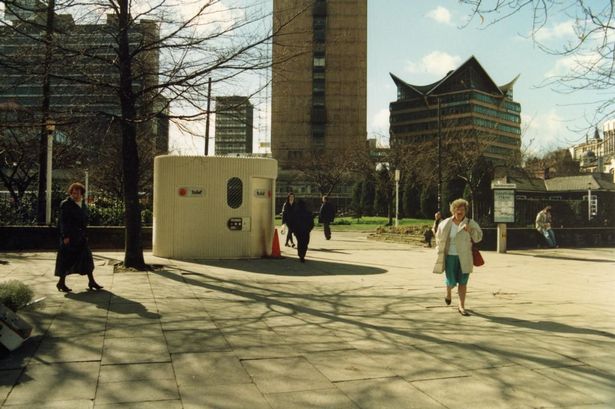 Many examples of great architecture in Manchester have been lost forever(Image: @Manchester Libraries and Local Archives)
Many examples of great architecture in Manchester have been lost forever(Image: @Manchester Libraries and Local Archives)
Like all modern cities, Manchester has developed and changed with the times. But there’s something to the old adage ‘you don’t know what you’ve got ’til it’s gone’.
Sadly, when it comes to lost architecture, we know all too well what happens when historic parts of the city lie abandoned and fall into disrepair. The recent, tragic loss of the Hotspur Press building – gutted by a huge fire – is but one example.
Other great architecture has been lost due to deterioration or war damage. Sometimes unique and beautiful buildings have been lost to development.
Manchester city centre still boasts incredible architecture spanning many styles and eras, from contemporary skyscrapers to the warehouses and factories of the Industrial Revolution. There are also many fine examples of buildings designed in Gothic, Edwardian Baroque, Art Deco, and Neo-Classical styles.
But, occasionally, it’s good to remind ourselves of some of our lost buildings. Had some survived, they would surely have been adapted to play a unique and vital part in modern Manchester.
Sadly, the only way we can revisit these lost treasures is through photographs, and allow ourselves to imagine how different the city may have looked had they survived.
Love Greater Manchester’s past? Sign up to our nostalgia newsletter here
Hippodrome Theatre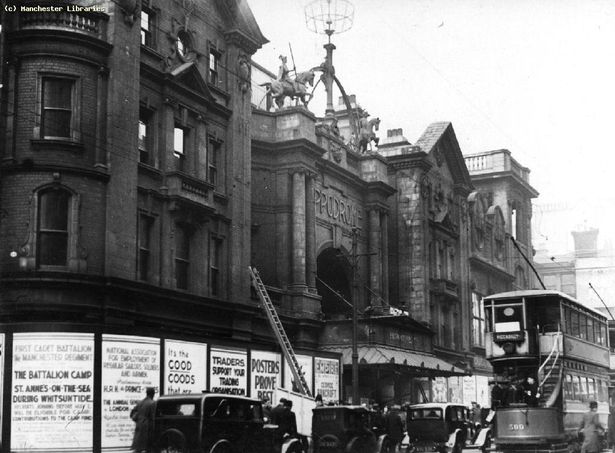 Hippodrome, Oxford Street, Manchester, 1935(Image: @Manchester Libraries)
Hippodrome, Oxford Street, Manchester, 1935(Image: @Manchester Libraries)
Designed as a variety theatre and circus, the Manchester Hippodrome on Oxford Street was built in 1904. It was the work of noted architect Frank Matcham, famous for his palatial class of variety theatres, in an Arabesque style.
Not only impressive on the outside, the theatre’s interior was described in stunning detail in a 1904 review in the Empire News & The Umpire: “The principal entrance is through the front colonnade, which is approached by marble steps and black and white marble pavements.
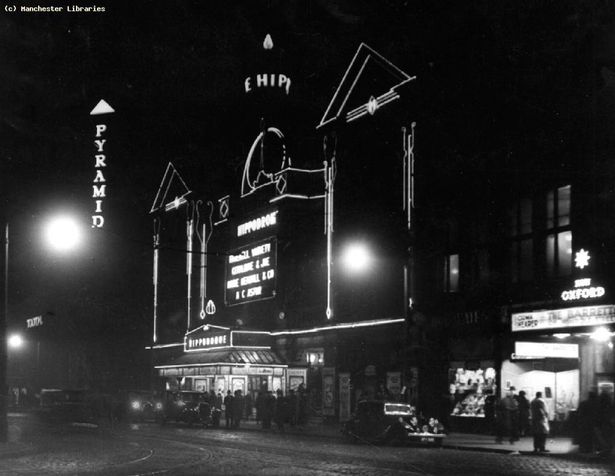 Hippodrome, Oxford Street, Manchester, at night. 1935
Hippodrome, Oxford Street, Manchester, at night. 1935
“The walls are covered to a height with coloured Italian marbles, having a rich frieze over a wide marble staircase, flanked with marble balustrading, and columns supporting richly-carved Arabesque arches leading to the foyer”.
The Manchester Evening News described it the same year as ‘Manchester’s gorgeous new palace of pleasure’. The outstandingly ornate building was demolished in the 1930s, just 15 years after its construction. It was replaced by the equally impressive art deco Gaumont Cinema, which was itself demolished in 1990.
General Post Office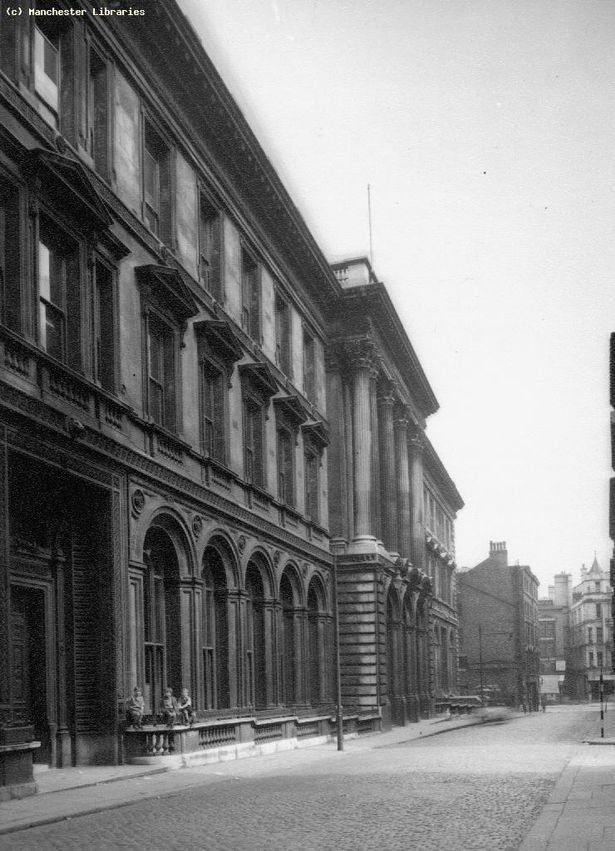 General Post Office, Spring Gardens, Manchester, 1954(Image: @Manchester Libraries)
General Post Office, Spring Gardens, Manchester, 1954(Image: @Manchester Libraries)
Another lost gem was Manchester’s General Post Office building in Spring Gardens. Opened in 1884, the Romanesque building was demolished in the 1960s and replaced by a much more modernist, concrete structure in 1969, which still stands to this day.
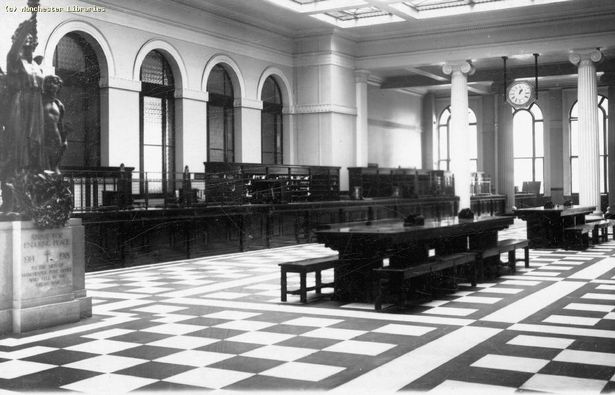 Interior of General Post Office, Spring Gardens, 1929(Image: @Manchester Libraries)
Interior of General Post Office, Spring Gardens, 1929(Image: @Manchester Libraries)
But the outside wasn’t the only impressive part. The interior consisted of elegant halls befitting its classical façade, with archways, sculptures, and chequered flooring. The old General Post Office is often cited as one of the city’s great architectural losses.
Royal Exchange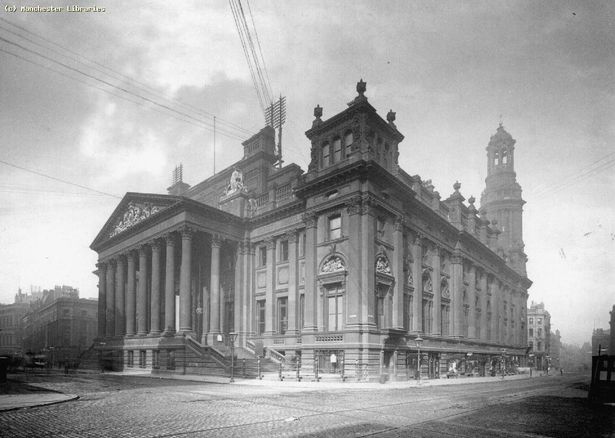 Royal Exchange, third building – first stage with classical portico columns, Market Street, Manchester, 1905(Image: @Manchester Libraries)
Royal Exchange, third building – first stage with classical portico columns, Market Street, Manchester, 1905(Image: @Manchester Libraries)
The Royal Exchange building still stands on the land bounded by St Ann’s Square, Exchange Street, Market Street, Cross Street and Old Bank Street. However, looking at old photographs, it no longer looks quite as grand as it once did.
The first incarnation of the exchange was built in 1729. That was replaced in 1809 with a new building designed in the classical style.
This building was replaced by a third version, built between 1867 and 1874, complete with a classical portico entrance of towering columns.
Join the Manchester Evening News WhatsApp group HERE
Sadly, the grand colonnade on Cross Street was demolished in 1921, as the building was extensively remodelled and pushed out to the pavement line. It was also seriously damaged during World War Two when it was hit during the Manchester Blitz at Christmas in 1940.
The interior was rebuilt, and the destroyed clock tower was replaced with a simpler form. When trading ceased at the exchange in 1968, the entire building was threatened with demolition.
It remained empty until 1973, when it was used to house a theatre company. The building was spared the wrecking ball when the Royal Exchange Theatre was founded in 1976, giving the former trading hall a reprieve as a venue for the arts.
Gaiety Theatre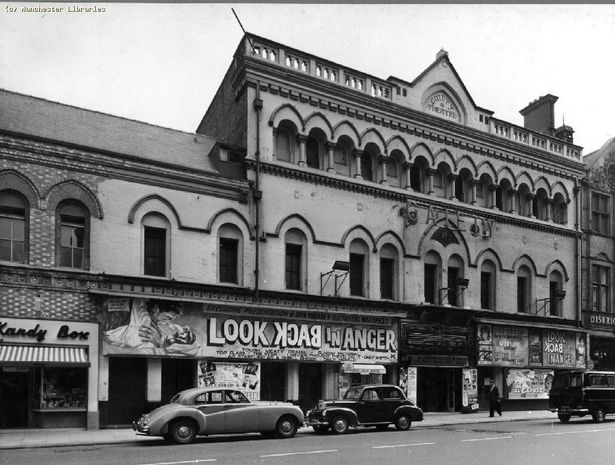 Gaiety Theatre on Peter Street, Manchester, 1959(Image: @Manchester Libraries)
Gaiety Theatre on Peter Street, Manchester, 1959(Image: @Manchester Libraries)
The Gaiety Theatre on Peter Street opened in 1884 as a comedy theatre. It was built to replace a previous Gaiety Theatre on the site that had been destroyed by a fire.
The theatre was remodelled and reopened in 1912 as the Gaiety Theatre and was Britain’s first regional repertory theatre.
It was a venue for live theatre arts until it was purchased and reopened in 1921 as the Gaiety Picture House. Now thought of as a lost cinema treasure, the venue was closed in 1957 before being demolished two years later.
Manchester Assize Courts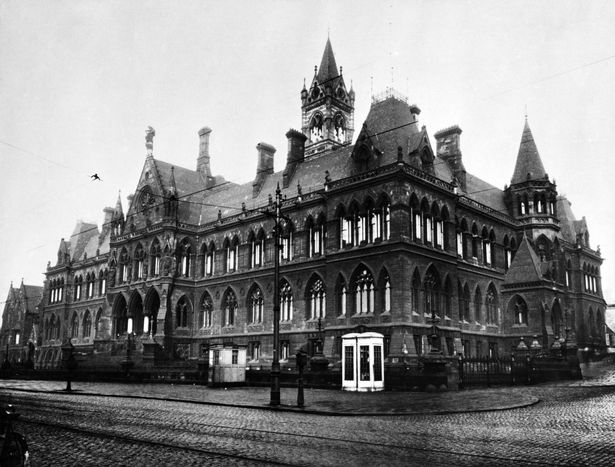 Manchester Assize Courts, circa 1938(Image: Getty Images)
Manchester Assize Courts, circa 1938(Image: Getty Images)
Acknowledged as one of Britain’s great lost buildings, the Manchester Assize Courts housed the law courts on Great Ducie Street. Completed in 1864 and at 279 feet tall, it was the tallest building in Manchester until 1877.
Alfred Waterhouse designed the building in the Venetian Gothic style. The exterior was adorned with sculptures depicting lawgivers from history, including macabre carvings depicting different historical punishments.
Sadly, the building was severely damaged in the Manchester Blitz in 1940 and 1941. And while some war-damaged buildings in the city were repaired, the Manchester Assize Courts were demolished in 1957, 17 years after standing empty and gutted.
Ye Olde Rovers Return The Rovers Return – later Ye Olde Rovers Return – at Shudehill. Pictured here in 1877. Built in 1306 it was thought to have been Manchester’s oldest pub. It was demolished in 1958(Image: Manchester Local Image Collection)
The Rovers Return – later Ye Olde Rovers Return – at Shudehill. Pictured here in 1877. Built in 1306 it was thought to have been Manchester’s oldest pub. It was demolished in 1958(Image: Manchester Local Image Collection)
Ye Old Rovers Return was a public house in Withy Grove that inspired Coronation Street’s fictional Rovers Return. The original timber-framed building was built in 1306 and was part of the outbuildings of Withingreave Hall, a medieval mansion that would later become home to 17th-century philanthropist William Hulme.
No records survive establishing when it first became a pub. Still, it has long been claimed to be the oldest pub in Manchester, although the nearby Seven Stars Inn disputed this title. After Ye Olde Rovers Return surrendered its licence in 1923, it retained its name and operated as a book and antique shop.
After standing for over 650 years, it was eventually demolished in 1958 as part of wider redevelopments in the city. The building’s original site is now beneath the Arndale Centre.
Northcliffe House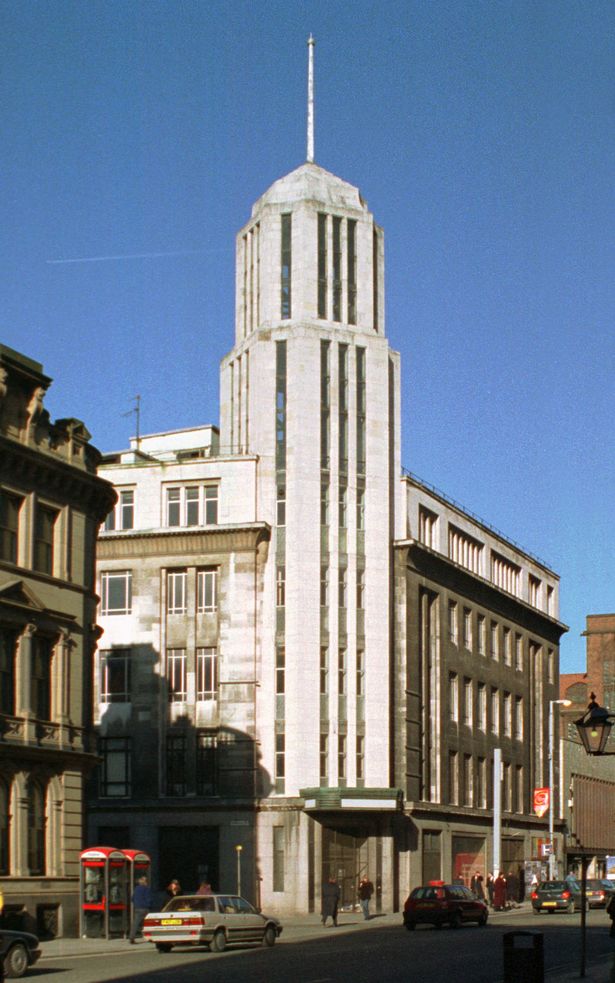 Northcliffe House, the art deco former Daily Mail building on Deansgate, demolished 2003, site of RBS building(Image: Manchester Evening News)
Northcliffe House, the art deco former Daily Mail building on Deansgate, demolished 2003, site of RBS building(Image: Manchester Evening News)
Northcliffe House was once home to the Daily Mail newspaper on Deansgate. Built in 1931, the rocket-shaped Art Deco tower was a classy addition to the city centre skyline.
With its American noir feel, the building became a Manchester Landmark. After the Daily Mail left Northcliffe House in 1990, it was demolished in 2002 as part of plans to redevelop the Spinningfield area.
Tommy Ducks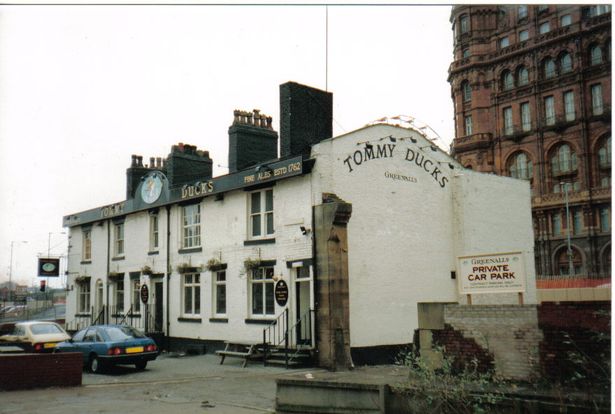 Tommy Ducks, East Street, Manchester, 1991(Image: deltrems@flickr)
Tommy Ducks, East Street, Manchester, 1991(Image: deltrems@flickr)
Although it may have been gone for over 30 years, Mancunians still fondly remember this infamous city centre pub. The landmark boozer was based on East Street across from the Midland Hotel and had roots in the 1800s.
One of Manchester’s most talked about – and possibly most notorious – drinking joints, at one point the pub boasted 100 whiskies behind the bar and an incongruous vegan food offer. It also featured glass-topped coffins as tables and ladies’ knickers nailed to the ceiling.
In the early 1990s, regulars were left heartbroken when they woke up to find Tommy Ducks gone. The pub was demolished on February 13, 1993, the night its preservation order ran out.
Lancaster Arcade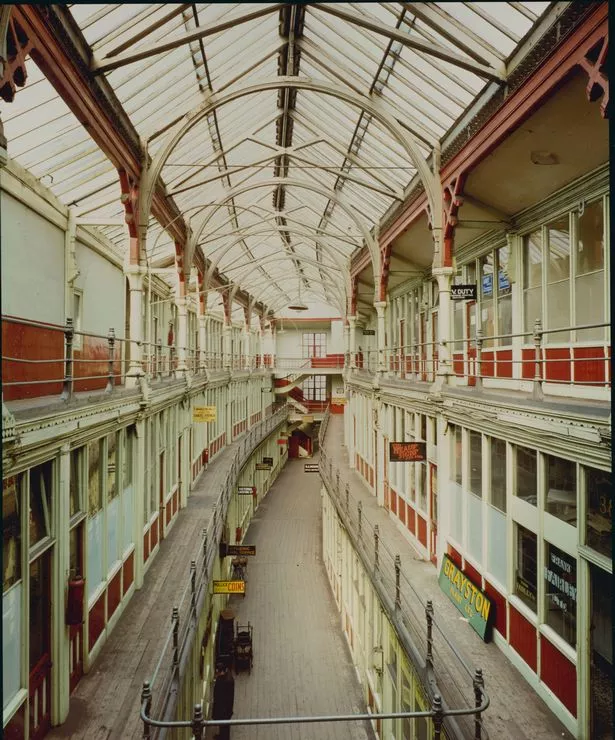 Manchester’s Lancaster Arcade, 1969(Image: Manchester Archives and Local History Library)
Manchester’s Lancaster Arcade, 1969(Image: Manchester Archives and Local History Library)
There used to be a mall in Manchester between Victoria Station and the Corn Exchange, which is still remembered. From Fennel Street to Todd Street, Lancaster Arcade linked the iconic city centre buildings.
Once filled with independent businesses, it was demolished in the mid-1970s. Its name and origins are shrouded in mystery, and its distinct design – narrow wooden walkways, with shops housed in cell-like units – has led some to speculate it was once a women’s prison.
Bernard House Piccadilly Gardens with the now lost Bernard House in the background. 1990(Image: @Manchester Libraries and Local Archives)
Piccadilly Gardens with the now lost Bernard House in the background. 1990(Image: @Manchester Libraries and Local Archives)
Even among the futuristic stylings of Piccadilly Plaza, Bernard House stood out a mile. Built in 1969, the office block’s spiky, timber framed roof, which jutted upwards at all four corners, made it seem as if a bit of the Blade Runner set had been plonked on the corner of Mosley Street.
But while most of the plaza has survived renovation in 2001, sadly Bernard House was sacrificed to make way for a Marks and Spencer. To this day it’s much missed by Modernist architecture lovers.
